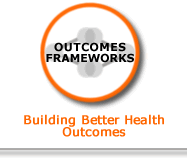 |
F. Evidence for a coordinated response and appropriate information sharing for improved identification and assessment of children affected by parental substance use (Families model) |
Summary There is highly processed evidence for the use of screening and assessment tools to improve appropriate referrals among vulnerable children and families. Review-level evidence, attachment theory and effective interventions further demonstrate the importance of early identification and support for parents and children at risk. Policy and practice guidelines support and protect information sharing protocols for a coordinated response. Rationale NICE Public Health Guidance 4 recommendations on community-based interventions to reduce substance misuse among vulnerable and disadvantaged children and young people[1, 2]:
In their Scottish-Government-commissioned review for the Scottish Child Care and Protection Network, Mitchell and Burgess (2009) identify evidence from one good quality small-scale UK-based study identifying that early referrals, at or around birth in particular, were associated with good outcomes for children. The study authors, Forrester and Harwin (2008) advocate for early identification and effective inter- agency working encompassing screening and referral for either alcohol or drugs misuse during pregnancy and infancy [3]. NHS Health Scotland’s Briefing on attachment (Scott 2011) [4] describes attachment as the bond from a child towards their parent or primary caregiver. The briefing cites John Bowlby’s theory of attachment (Attachment and Loss: Vol.1 Attachment, 1982) that defines attached as ‘the disposition of the child to seek proximity to and contact with a specific figure and to do so in certain situations, notably when he is frightened, tired or ill.’ The briefing outlines that there are links between an infant’s attachment style and their later social and emotional outcomes. Secure attachment in infancy is associated with positive outcomes including self-esteem, self-confidence, emotional regulation, resilience and more harmonious relationships in childhood and early adulthood. While attachment style may be a risk or protective factor, this association is not deterministic. Other factors, for example social support or life stress are likely to mediate this influence (from Sroufe 2006, Prior and Glaser, 2006 cited in ibid). The briefing details evidence on effective strategies for promoting secure attachment in young children:
Scottish policy and practice note Children affected by parental substance misuse have been specifically cited as a priority area in the drugs strategy, The Road to Recovery (2008) [5]. The drugs strategy cites the role of adult services and outlines actions to improve identification, assessment, recording and planning, and information sharing; to build the capacity, availability and quality of support services; and to strengthen the consistency and effectiveness of immediate risk management. The GIRFEC approach [6] provides a series of common tools, language and planning processes that can improve identification of the risks and needs in a child’s life as part of a wider assessment of the child’s development. In particular, any action to support a child should be co-ordinated through a single Child’s Plan. Both the family and the services involved should be clear about the purpose of the Plan and what is expected of each family member and service to achieve recovery. The new updated Getting Our Priorities Right (GOPR) guidance (2013) [7] reflects and is framed in the context of the national GIRFEC approach and the recovery agenda. The guidance sets out a framework for information sharing between services. Issues to be considered include consent, confidentiality, ‘need-to-know’ basis, relevance of information to be shared, proportionality in the amount of information shared, method by which it will be securely shared. Furthermore a record must be kept of what, when, who with, how and the purpose of any information shared. The guidance states that when working with parents with problematic alcohol and/or drug use, services should always consider the possible impacts on any dependent children, be alert to their needs and welfare and respond in a coordinated way with other services to any emerging problems. GOPR includes ‘Practice Points for Adult Services’ in their role in the support and protection of children. Services with individual roles and responsibilities included in the GOPR guidance document include health, education, social work (children and families; criminal justice and adult support); alcohol and drug services; third sector; advocacy and welfare support services; housing, police and Children’s Reporters. A national data system is in development by NHS Information Services Division on behalf of the Scottish Government, the Drug and Alcohol Information System (DAISy), to gather a range of outcomes-related data throughout the recovery journey of people accessing specialist drug and alcohol treatment services across Scotland. The Children and Young People’s Act (2014) [8] makes provision about the rights of children and young people;about investigations by the Commissioner for Children and Young People in Scotland; for and about the provision of services and support for or in relation to children and young people; for an adoption register;about children’s hearings, detention in secure accommodation and consultation on certain proposals in relation to schools; and for connected purposes.
|
References:
|

